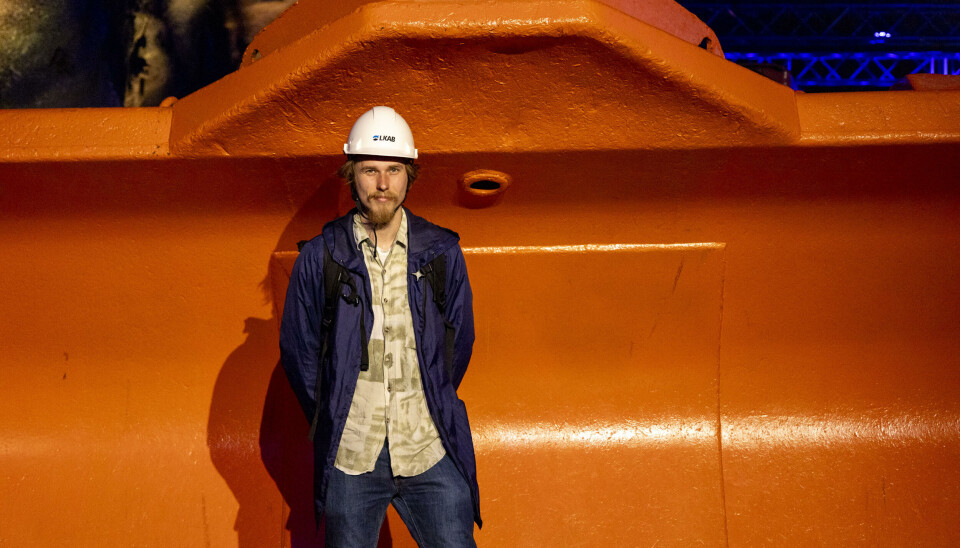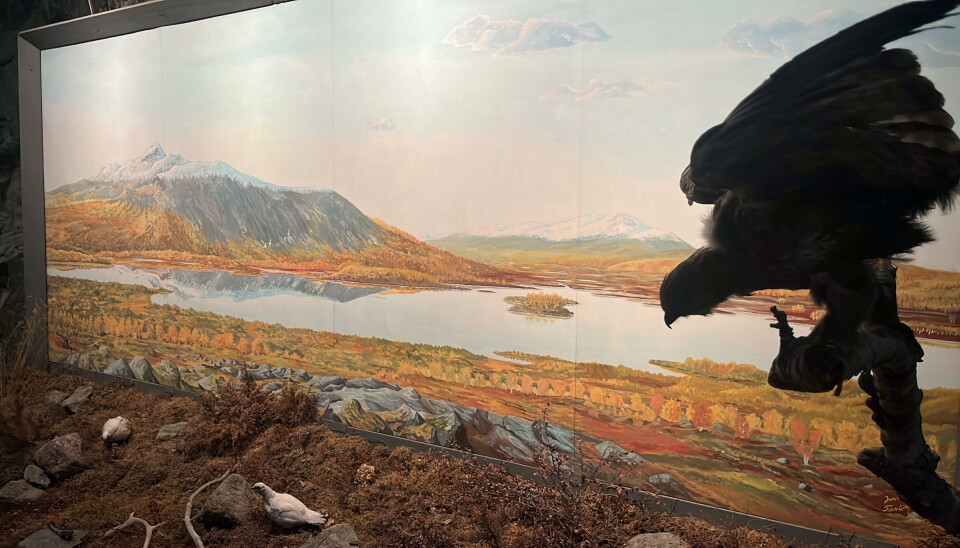OPINION

Without luck, I’ve tried to find a mine that hasn’t destroyed its environment
Summer is a busy season for mining companies. That is at least the impression I got after the Swedish state owned LKAB was the second mining company to decline to host us for a press visit at their site. Understandable, as our request was made just under 2 weeks in advance and we only gave them a few days as a range of options. Nevertheless, we were able to attend a tour to the mine by the Kiruna Lappland Tourist Center.
While exciting to drive down to the LKAB Visitor Center, 540 meters deep in the mine (but still more than 200 meters above sea level), the place itself felt more like a convention centre than a mine. After a 30 min bus ride from the new town centre we got to see a 10 minute film explaining how LKAB is making the industry green, before we were allowed to explore the poster-decorated tunnels.
A lot of what LKAB does is of course very good. Electrifying the machinery, both inside the mine and for the trains that transport the product, is something that should be mandatory everywhere. Steel production (to which LKAB’s iron pellets contribute) accounts for around a 10th of global CO2 emissions. By replacing carbon with hydrogen to capture oxygen, the rest product becomes plain water instead of carbon dioxide. The only problem here is that this isn’t happening on scale yet and most of the product is still dirty as coal. The promise of some day being green is used to justify current pollution.
The environmental impact isn’t limited to pollution. The visitor center includes a museum, where one can see a painting of the pristine nature around Kirunavaara mountain before the mine. The neighbouring lake Luossajärvi has today been drained to a third of its original size and is polluted with high concentrations of sulphate and nitrite.

LKAB really seems to get away with anything. The expansion of the mine has forced the town center to be relocated. An investment the company sees profitable, despite sunk costs of 23 billion Swedish kronor (€2,1 billion) and another 9,5 billion kronor (€850 million) allocated, since it allows them to continue extracting ore until the 2060s. As I’m writing this, the city is getting ready to relocate the church, an event that is a huge media spectacle of its own.
LKAB has a special relation to Kiruna as the city wouldn’t exist without the company. The company, along with its subcontractors, is a huge employer, and inhabitants know not to bite the hand that feeds them. In addition to the main deposit of Kirunavaara, LKAB has another deposit close by. The Per Geijer iron deposit (named after a Swedish geologist), which is also said to be rich in phosphorus and rare earth elements, was granted the status of strategic project as part of the EU’s Critical Raw Materials Act (CRMA). This isn’t unproblematic. When mined, it would be detrimental to local Sámi reindeer herding. While the tourist tour emphasized that nothing will be mined until a compromise is reached, LKAB’s official communication doesn't mention anything about these kinds of hurdles.
Similarly, the Canadian conglomerate Blue Moon Metals’ Nussir Project in Repparfjord, Hammerfest municipality, another EU strategic project, threatens the protected salmon fjord and local reindeer calving area.
Free, prior and informed consent (FPIC) is a concept of international law that is meant to protect indigenous peoples self determination. It has been reported that the EU’s CRMA originally had mentions of FPIC, but which were scrapped in the final paper in favor of more vague mentions of indigenous consultation.
The EU’s CRMA gives a fast track to projects deemed critical (or strategic), but looking at the awarding process raises some questions. First, it was up to the companies themselves to apply for the status and member states’ acted as merely rubber stamps to push their “suggestions” in hopes of possible EU funding. Corporate law firms brag about successfully helping their clients acquire the status. Secondly, the decision makers seem unaware of the details of the projects. In the case of Anglo American Sakatti Mining in Sodankylä, Finland, where the mine risks destroying a doubly protected mire, EU commissioner for Prosperity and Industrial Strategy, Stéphane Séjourné admitted not knowing about the planned site being on conserved land.
With the strategic project status in hand, mines are likely to get exemptions to any national (or EU) protections. This creates a weird cycle, where no conservation is sacred.
Despite its flaws, LKAB can be seen as a success story. This cannot be said of any mine.
I’ve tried to find a mine that hasn’t destroyed its environment, but without any luck. (There is an amethyst mine in Northern Finland that comes close as they only mine by hand and a load of their income comes from hosting tourists.)
Mines account for around 75 % of all waste in both Finland and Sweden. While the Nordic countries have important mineral resources, our legislation isn’t suited for a sustainable mining industry. Finland has a mining tax of 0,6 %, Sweden takes royalties of 0,2 % and Norway lacks any such regulation. Mere corporate tax is no problem for multinationals that can make their subsidiaries loss-making on paper, if they ever manage to be profitable. A recurring story is that of a bankrupted mine that leaves a bill of dozens of millions for the state to pay.
If we ever want to manage the climate crisis, we badly need a green transition. Minerals and rare earths are needed for batteries and solar panels among other things. Most of which come from China. As part of this new geopolitical era the European Union wants to be self-sufficient. A reasonable goal, but is it acceptable at any price?
















